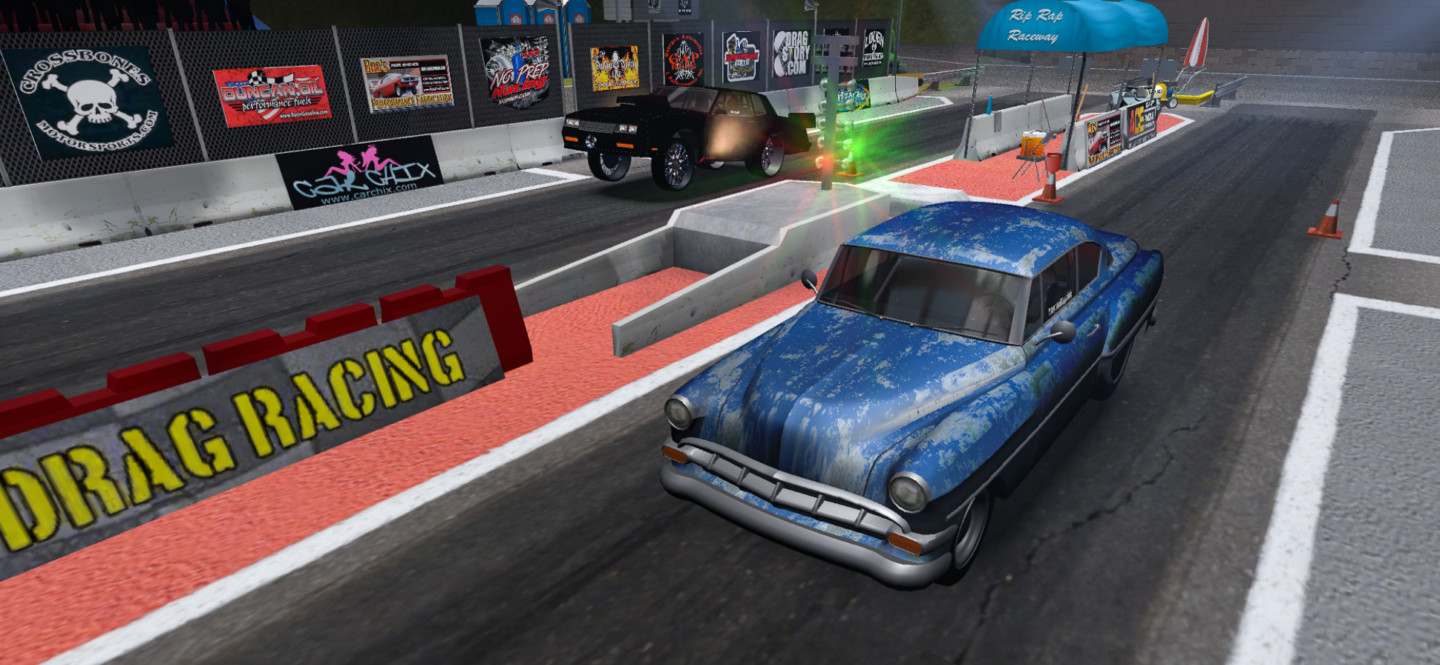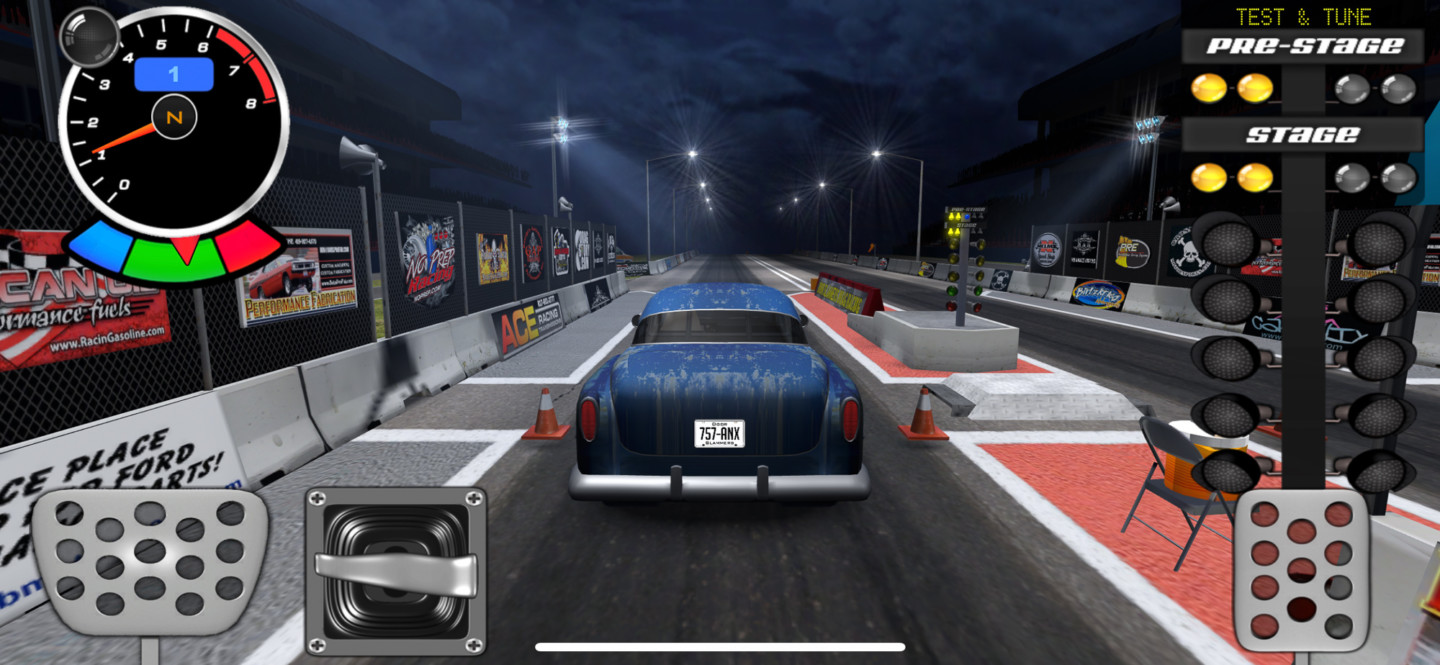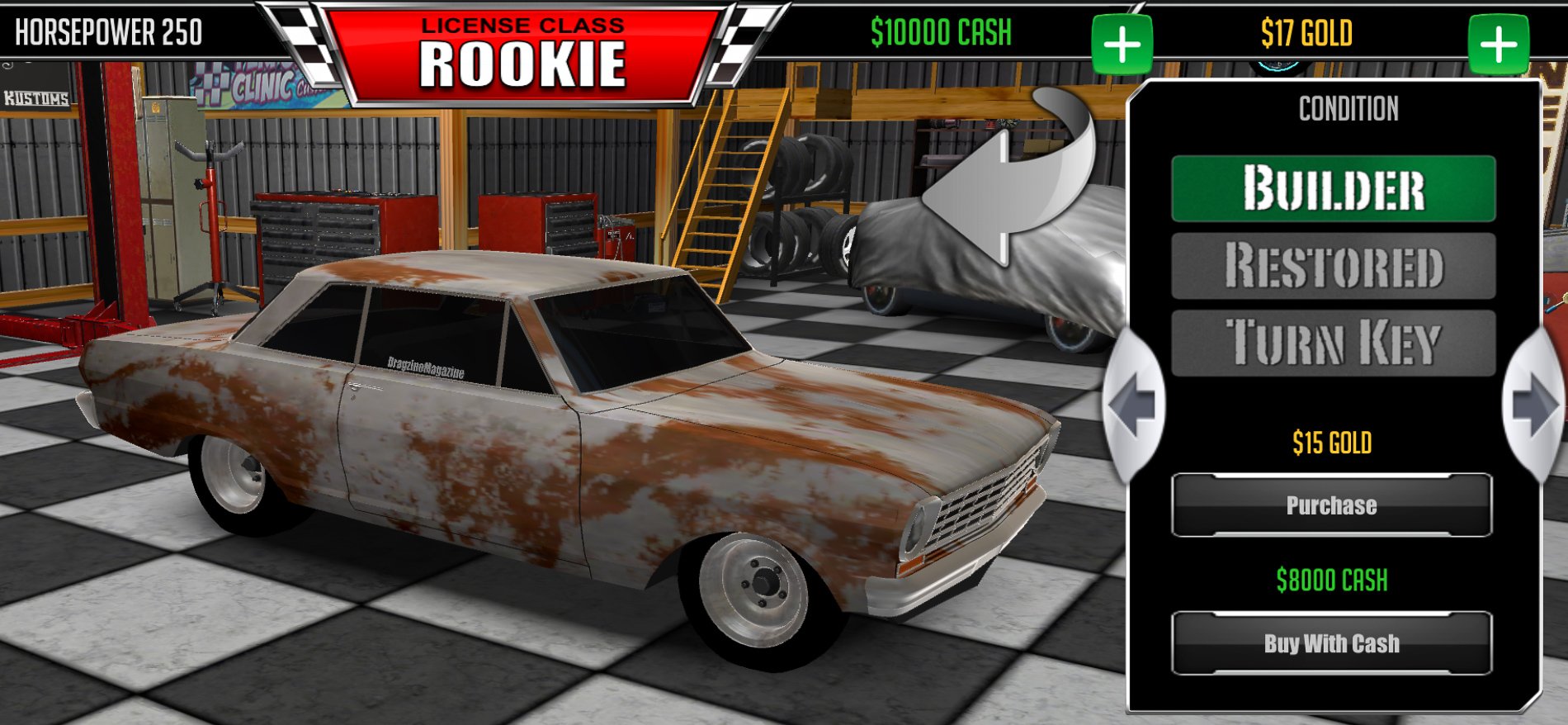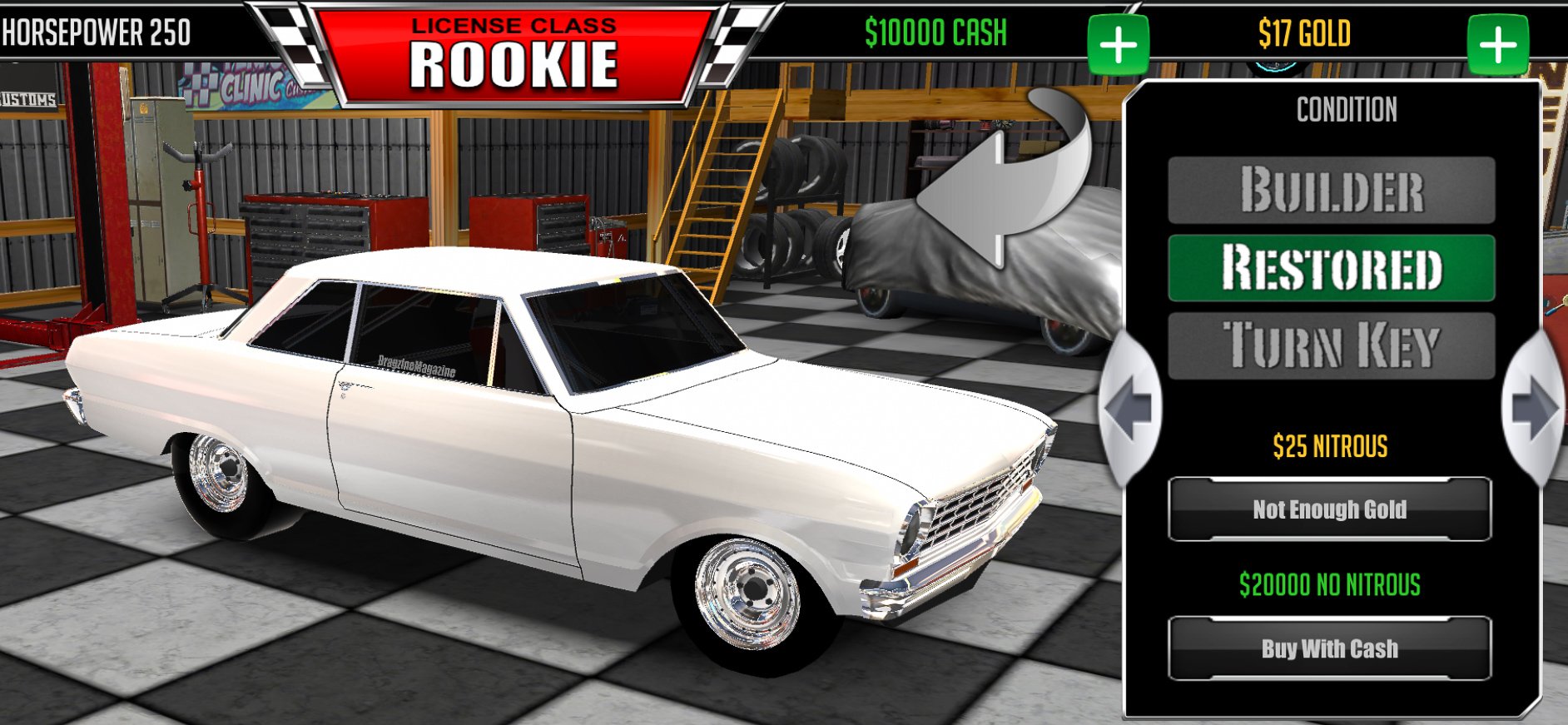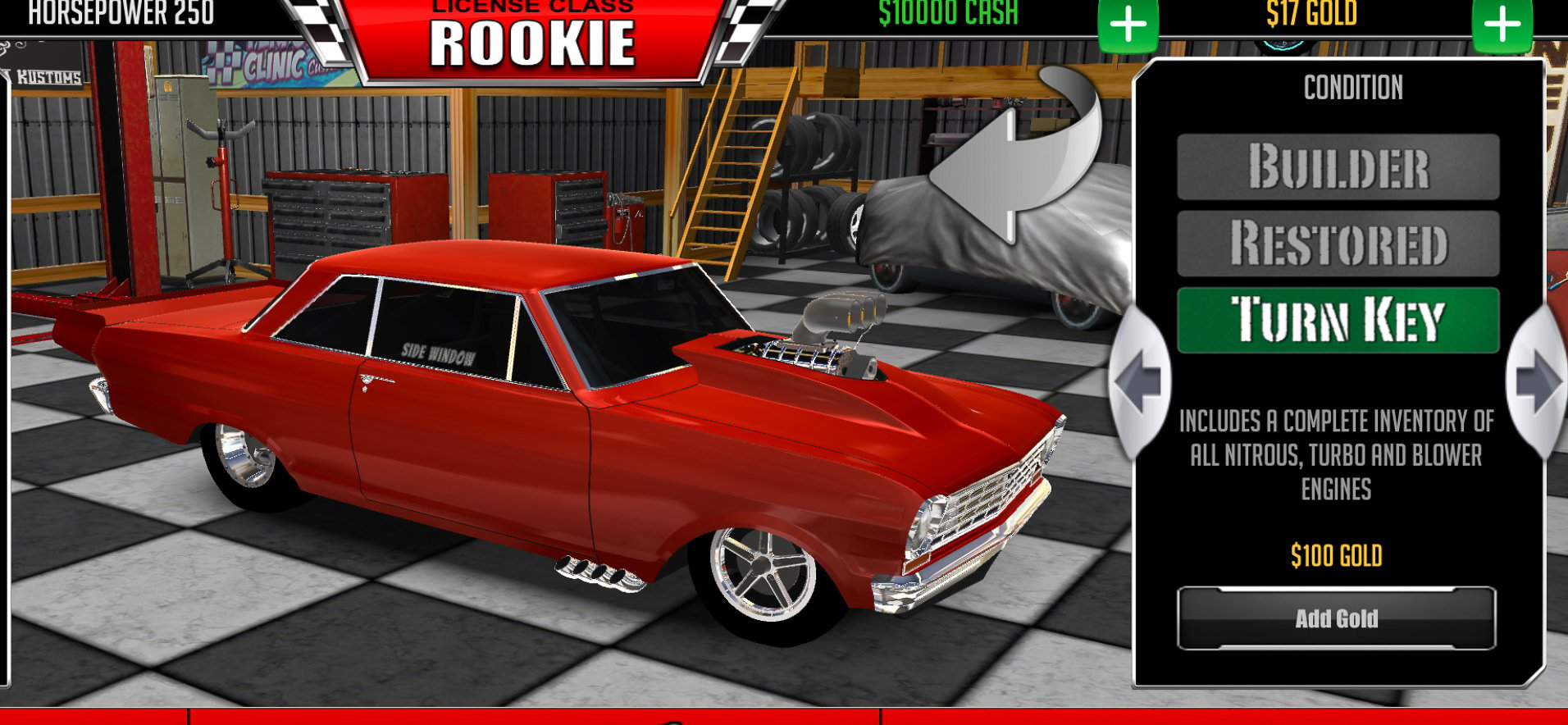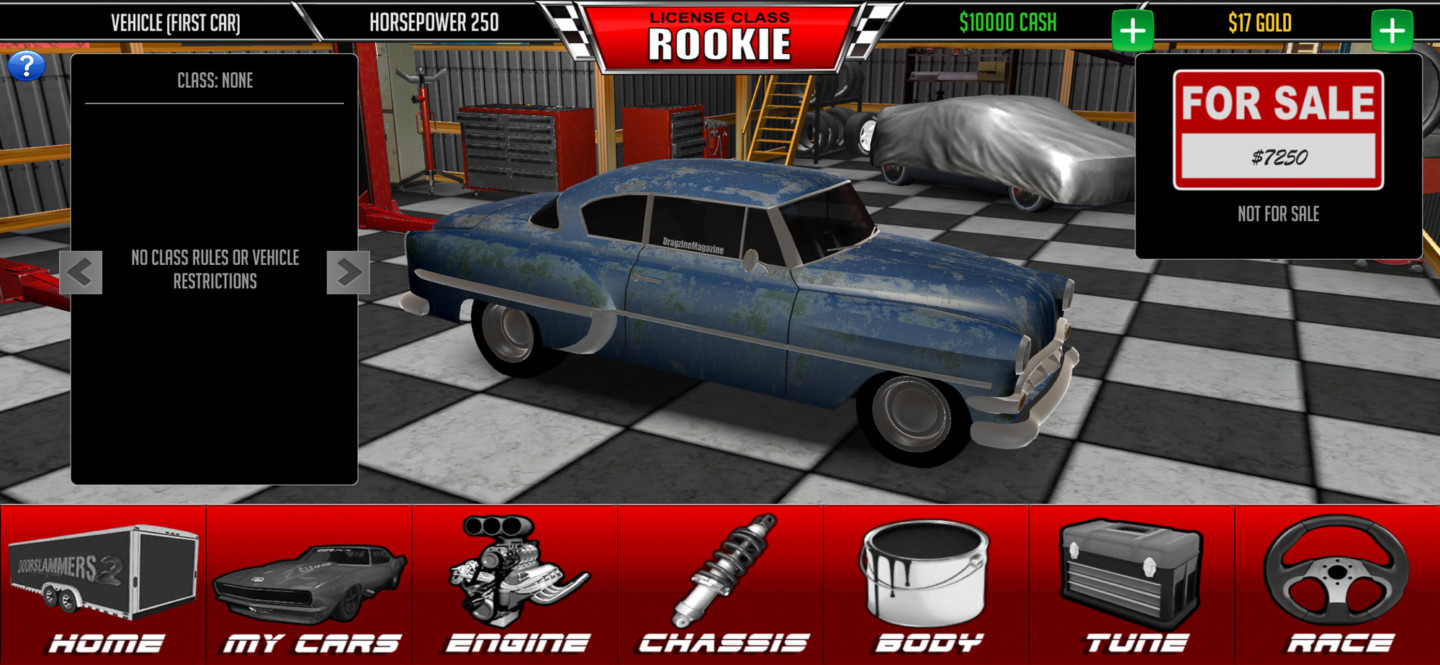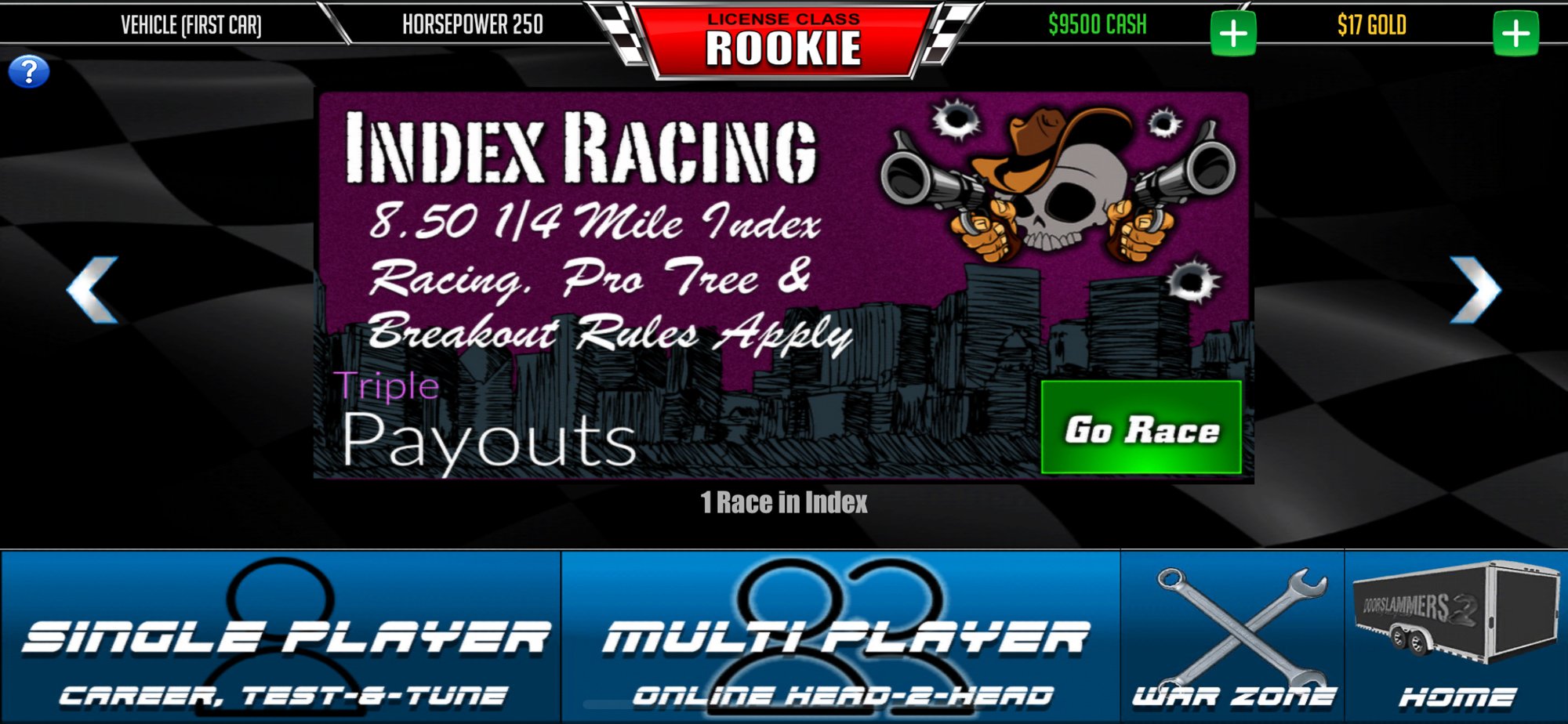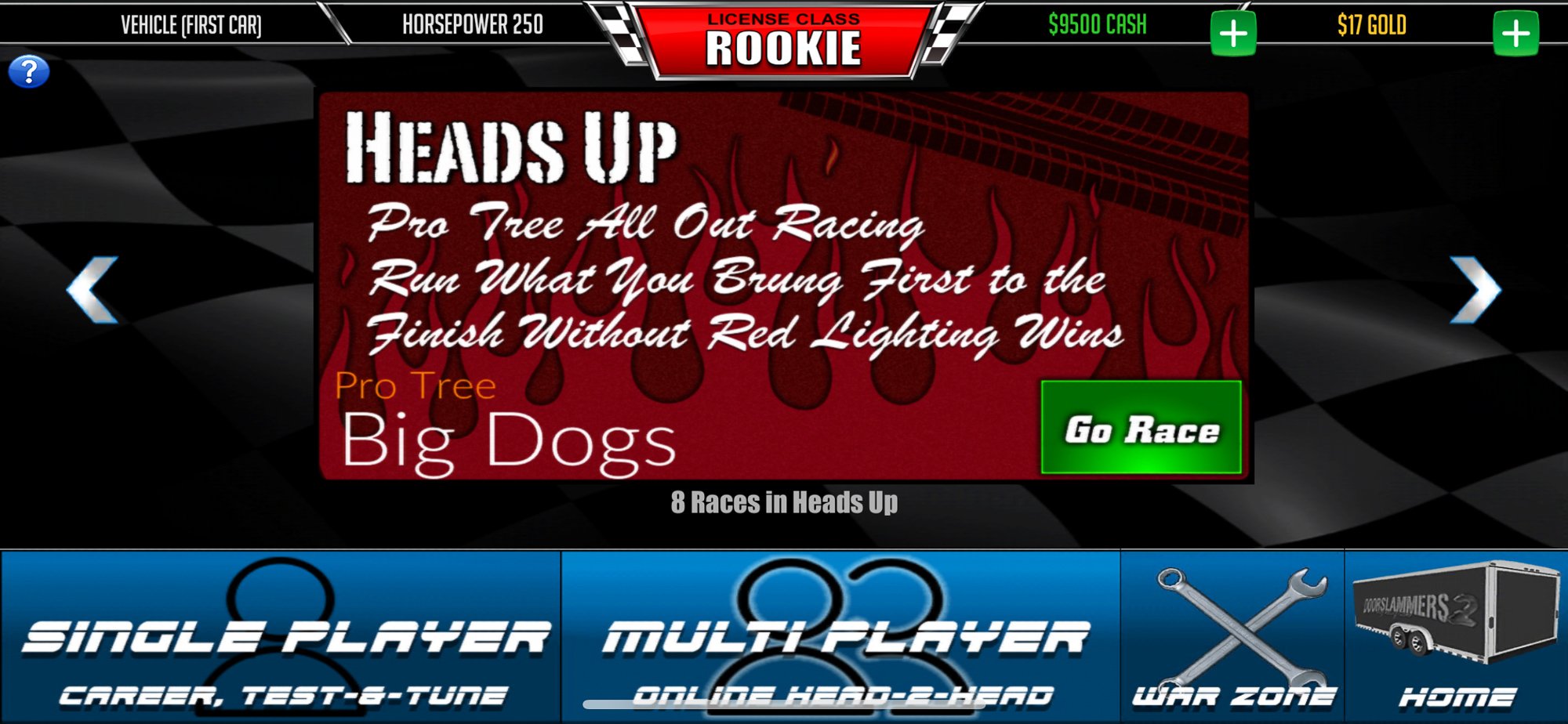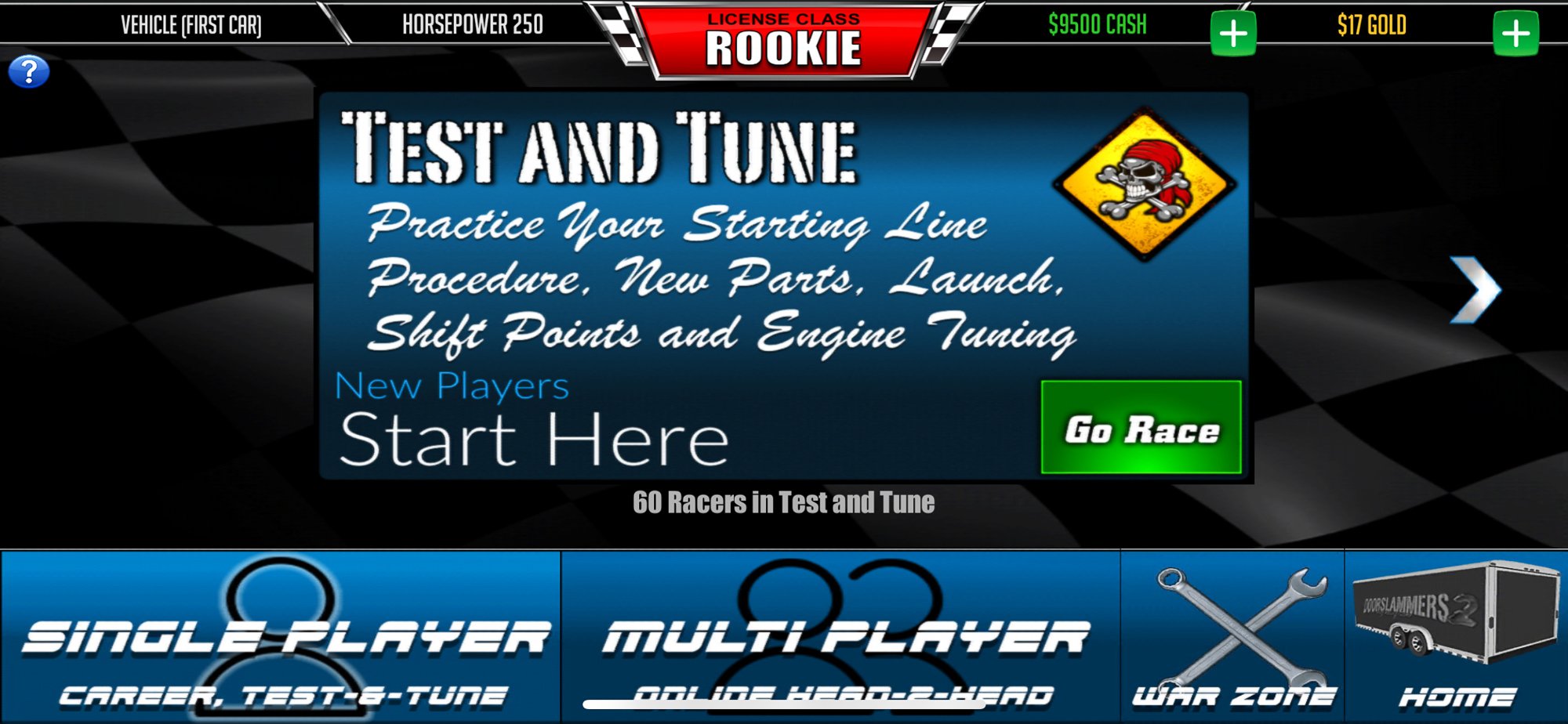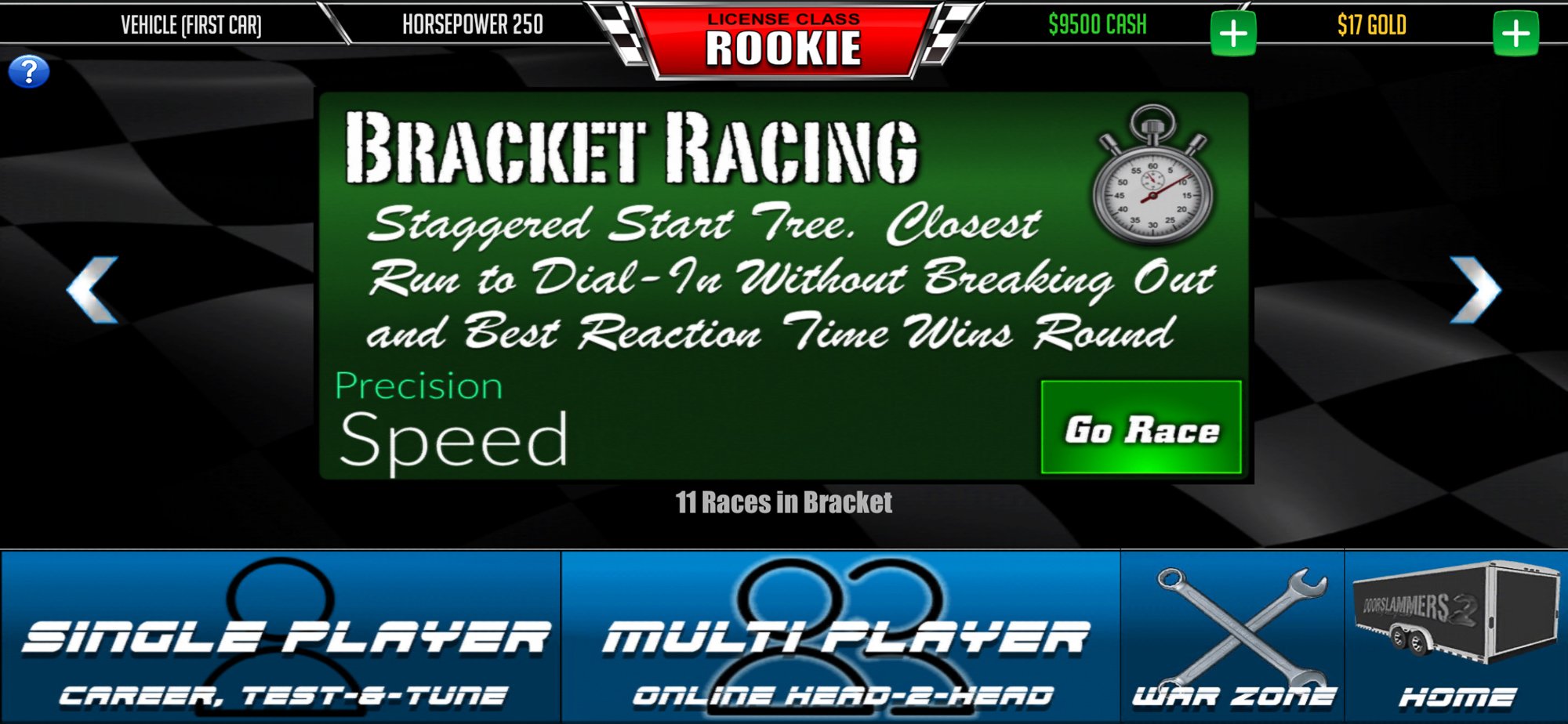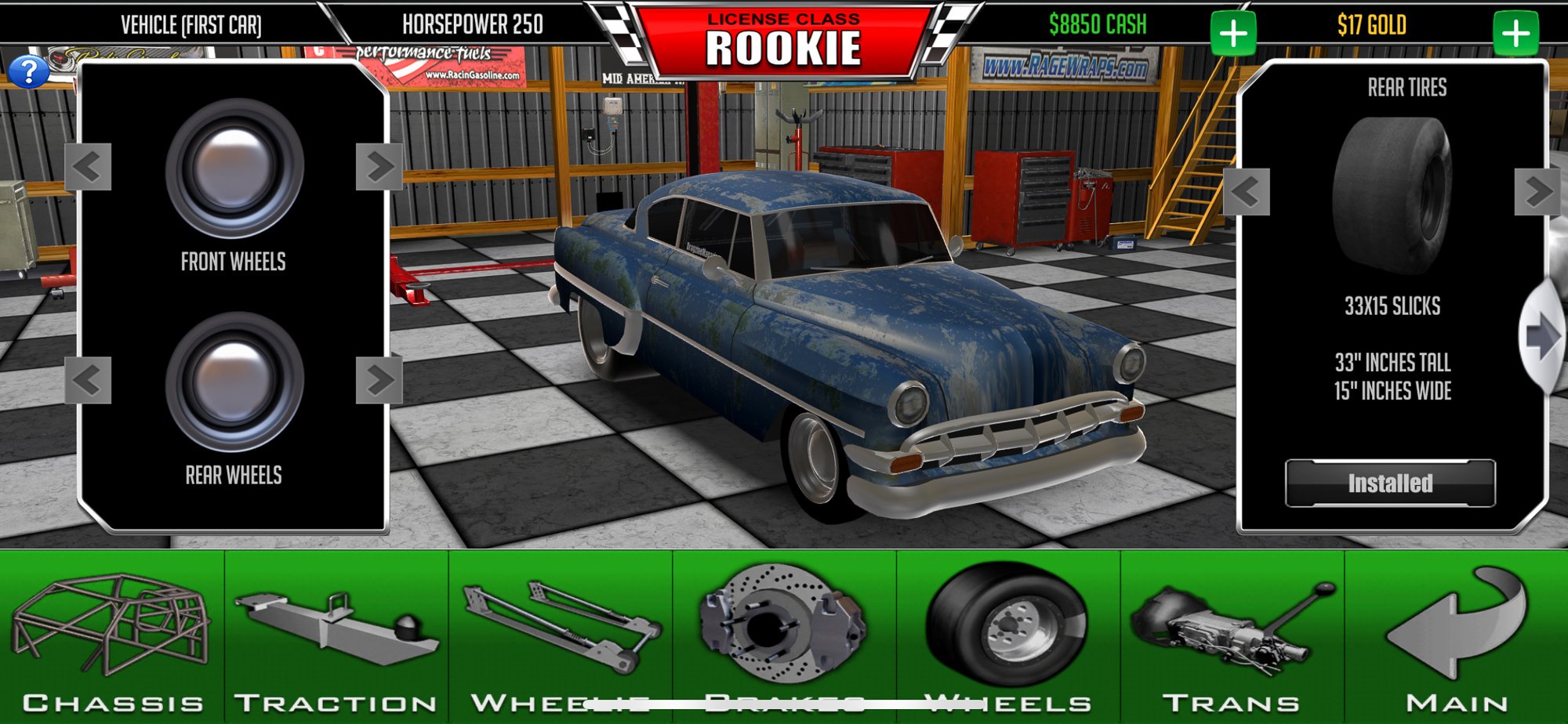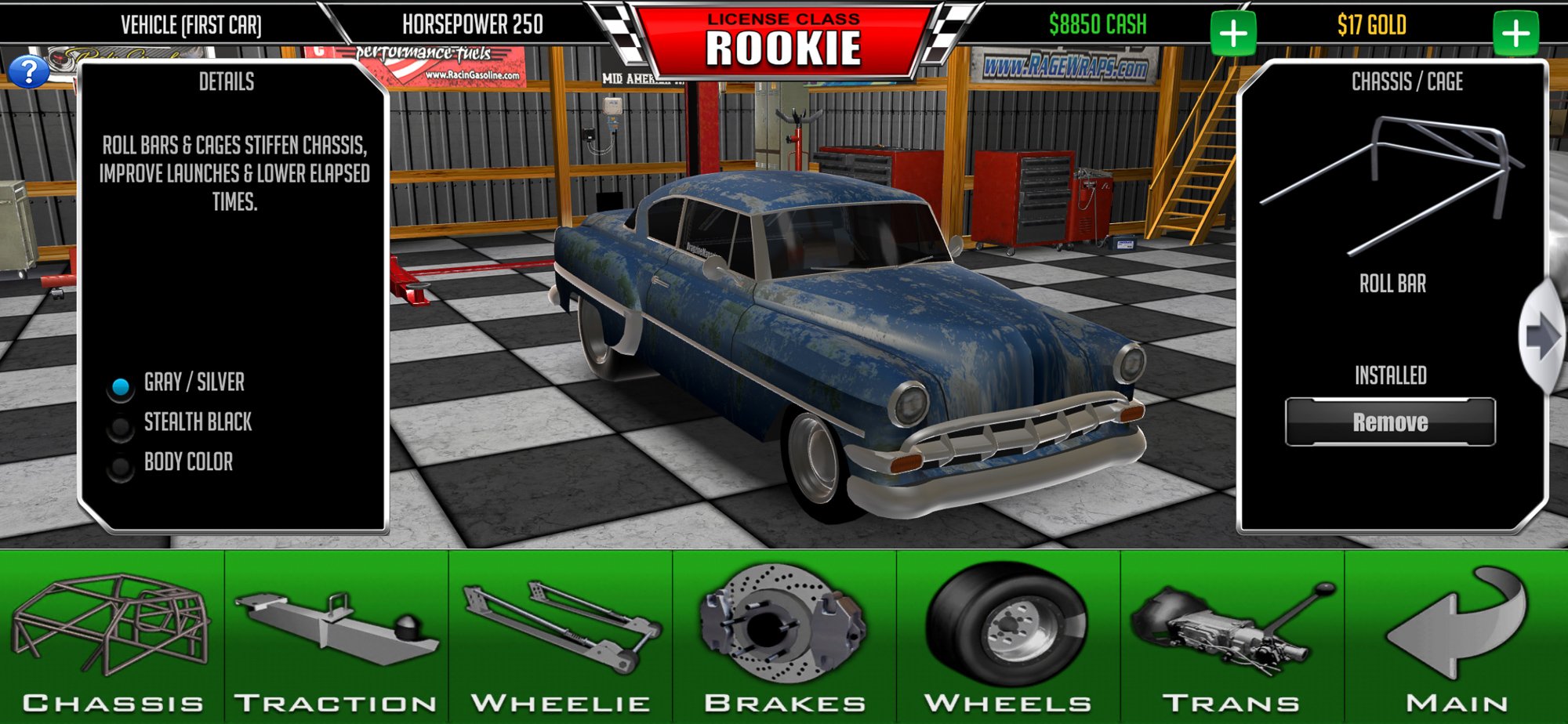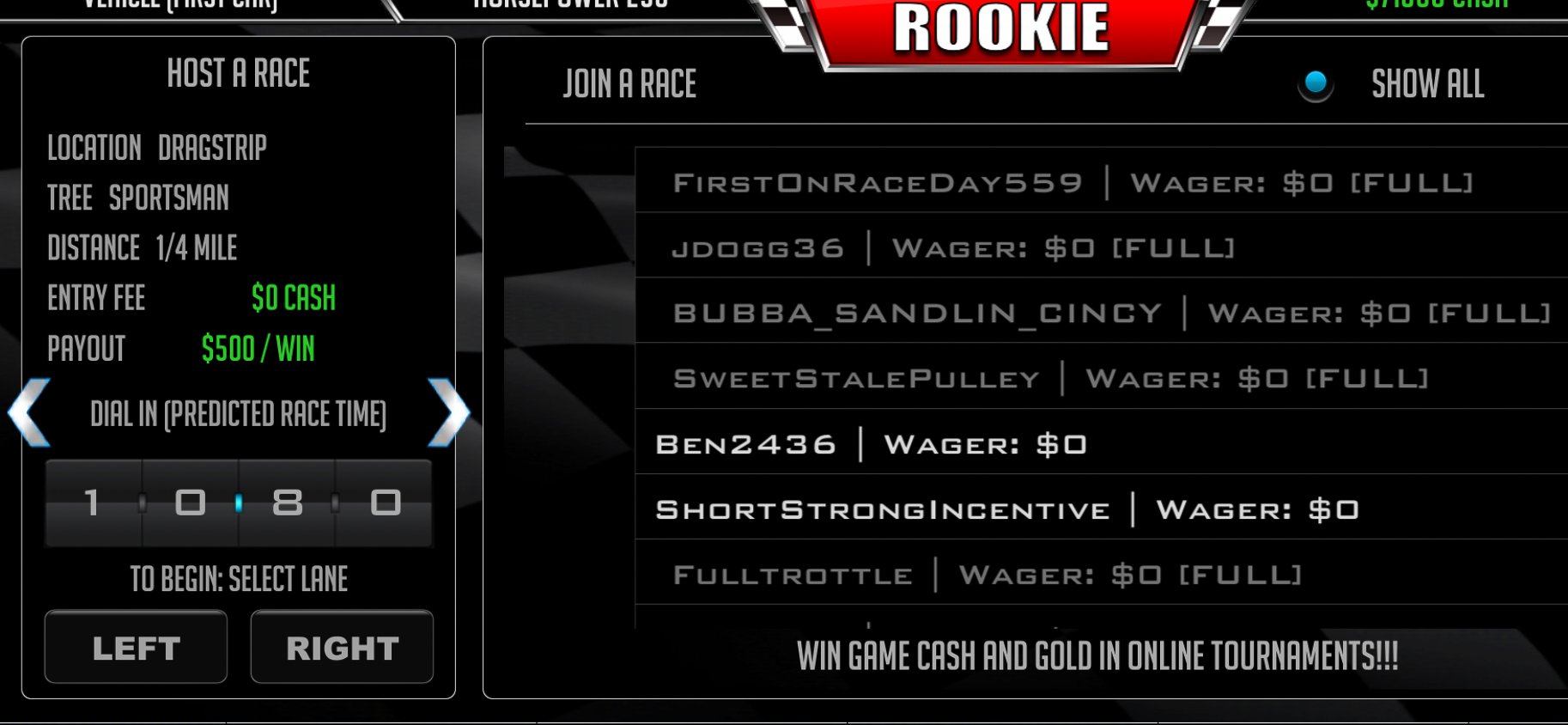The Door Slammers 2 mobile drag racing game is far more realistic than you may think. No, you can’t smell the burning rubber and race fuel or feel the car rumble beneath your derriere; yes, it does feature real-life components and responds to parts, tune-ups, and driver input like the real thing. But that’s not what I’m getting at….no, I’m talking about the very approach a player can take to competing in this on-the-go video game that in some ways is a simulation.
What am I getting at, then?
In real-life, most car enthusiasts begin by taking their vehicle — maybe it’s stock or stock-ish — to the local racetrack to get their feet wet. They want to know what the car is capable of, but they’re “green” to organized drag racing, they don’t really understand the basics, and aren’t to that addictive phase where they want to invest tens (or hundreds) of thousands of dollars and every waking hour preparing for and thinking about the next race. Some folks never get to that place, and some fall hard for the sport; there’s no right or wrong and everyone is different.
Well, the same rings true for the Door Slammers 2 game.
The development team behind the game went to incredible lengths to achieve realism, with real-world cars, an infinite assortment of engine, power-adder, chassis, tire, and paint combinations, and fairly accurate on-track racing characteristics. At the same time, the game was designed to feature a range of real-life styles of racing, from heads-up to grudge, index, no-prep, and bracket racing (and numerous sub-categories). Door Slammers 2 hosts daily tournaments featuring real-life classes of cars among people who have invested more time in tuning their cars and perfecting their driving skills than their wives or girlfriends are likely to ever approve of. These guys (and gals, even) are really, really good, and they’ve worked hard to be competitive.
Door Slammers 2 has a vast selection of real-life cars, from classic to late model, optioned as a bare-bones builder vehicle, restored (a racier look and engine configuration), and turn key (all-out race car with power adder). You can also begin with a builder car and upgrade up to and beyond a turn-key car piece by piece on your own terms.
But just because Pro Modified and X275 racers in the real world have hundreds of thousands of dollars in their operations and test regularly, doesn’t mean you have to, as well. You can start anywhere, get your feet wet, learn the basics, have some fun, and if you choose to get carried away…well, that’s great, too. After all, the real-life sport of drag racing has only sustained itself through the gradual transition by racers from daily-drivers on up through the ranks.
While a movie video game may sound daunting, or juvenile, even, it’s a ton of fun and a great way to compete with your buddies away from the racetrack practically for free. So, how do you, a virtual rookie car enthusiast, get started in Door Slammers 2?
We’re going to break it down.
Obviously, you’ll start by creating an account — a username and a password (we’ll assume you already have the game downloaded, but if not, you can get it on the App Store for the iPhone/iPad and on Google Play for Android devices). Once registered, you’ll arrive at the “home” screen, where you can access the game settings, as well as the Dealer, the Garage, and the Race options. Door Slammers 2 awards you $10,000 in cash and $17 in gold coins to spend as you see fit. There’s also a standard, classic car you begin the game with — you can spend your initial cash on a new car if you so choose, but you’ll need to accumulate some extra cash to make the needed upgrades.
What are those necessary upgrades, you ask?
Just like in real-life, we’ll emphasize traction and driver assistance.
Four of the several race modes Door Slammers 12 offers. For now, we're going to focus on the latter two to get you started dialing in your and bracket racing with your buddies and other online foes around the world.
Bracket racing is the simplest — and we’d argue the most entertaining — form of racing in Door Slammers 2, and to be competitive, you’ll need a basic arsenal of parts and tools. Fortunately, they’ll fit within your $10,000 budget and have you off and running.
First, navigate to Garage, then to Tune, then Timing; there, you’ll want to purchase a Line Lock. Once you’ve done that, it will unlock the Delay Box for purchase. Without these tools, you’ll be taking a knife to a gunfight in the online bracket races.
If you want to be competitive in bracket racing -- and by that we mean consistent on the tree and in elapsed time -- a line lock and delay box purchase are mandatory.
From there, navigate back to Chassis, where you’ll want to first upgrade your tires — we chose 33×10.5-inch slicks to get us going, and they’re more than adequate to start. Then, in the Traction options, first purchase the Slapper Bars and then upgrade to Ladder Bars. The tires and suspension are key, because invoking a sense of realism, without them your reaction times — even with the line-lock and delay box — will be all over the map, because the car is spinning the tires at the hit.
We recommend, to covet the basics for consistency, to purchase a set of slicks, upgrade your suspension to ladder bars, and add a roll bar to stiffen up the chassis. These cheap upgrades took our basic car from runs in the low-12's to 10.80s, and became uber-consistent.
Once you’re done in the Garage, head over to Race, and choose Test And Tune. On the left of your screen are a range of options, including the track, distance, prep/no-prep, and so on. You’ll also see number dials to adjust your delay box; unless you’ve made other performance upgrades beyond our recommendations, about .880-seconds of delay should get you in the ballpark to leave off the top bulb and cut .000 to .020 reaction times. Make a few runs, and adjust the delay up or down depending on your lights; as well, try to shift the car as consistently as possible to hone in a consistent E.T. so you can dial-in the car for some bracket racing action. It should be noted that Door Slammers 2 awards you cash for every test run you make, so even testing-and-tuning will help you stockpile cash for later upgrades.
Once we've got our delay box settings and our dial-in set, we're ready to do some online bracket racing. At left are said settings; you can join a race either by clicking an open race (shown at right) or selecting the left or right lane, and awaiting a competitor to enter the race.
Once you’re confident in your ride and yourself and you’re ready to race against real people, hit Race and head over to Bracket Racing; there you can either choose an existing race/competitor (at right), or simply set your dial-in and delay box at left, choose a lane (left/right), and wait for an opponent to join you.
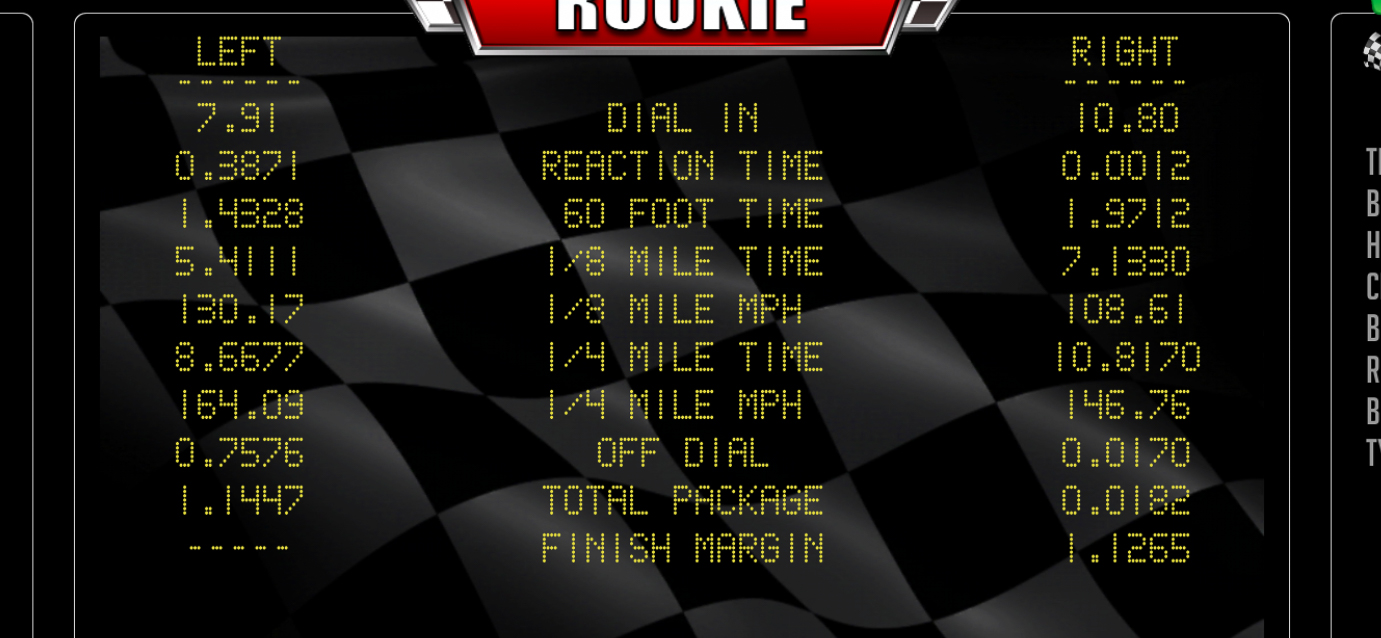
Within a matter of minutes, we had our delay box settings dialed in well enough to go .001 off the top bulb.
As we alluded to earlier, this is merely a starting point, just as it is in the real world. Most bracket racers prefer to be the “chaser” rather than the “chasee,” so as you accumulate cash from your winnings, you can upgrade the parts on your car, give it a flashy paint job, and get quicker and faster with time. You may also choose to build the car to specific rules for heads-up categories and take in online competitions — or even buy some Pro Modified cars to ,maximize the potential of the game. The beauty of this mobile game — like real-life — is there’s something for everyone, and even if you don’t have hundreds of hours to test a heads-up car to wring every ounce of performance out of it, you can still enjoy hitting the tree, shifting gears, and busting your buddys’ chops.

